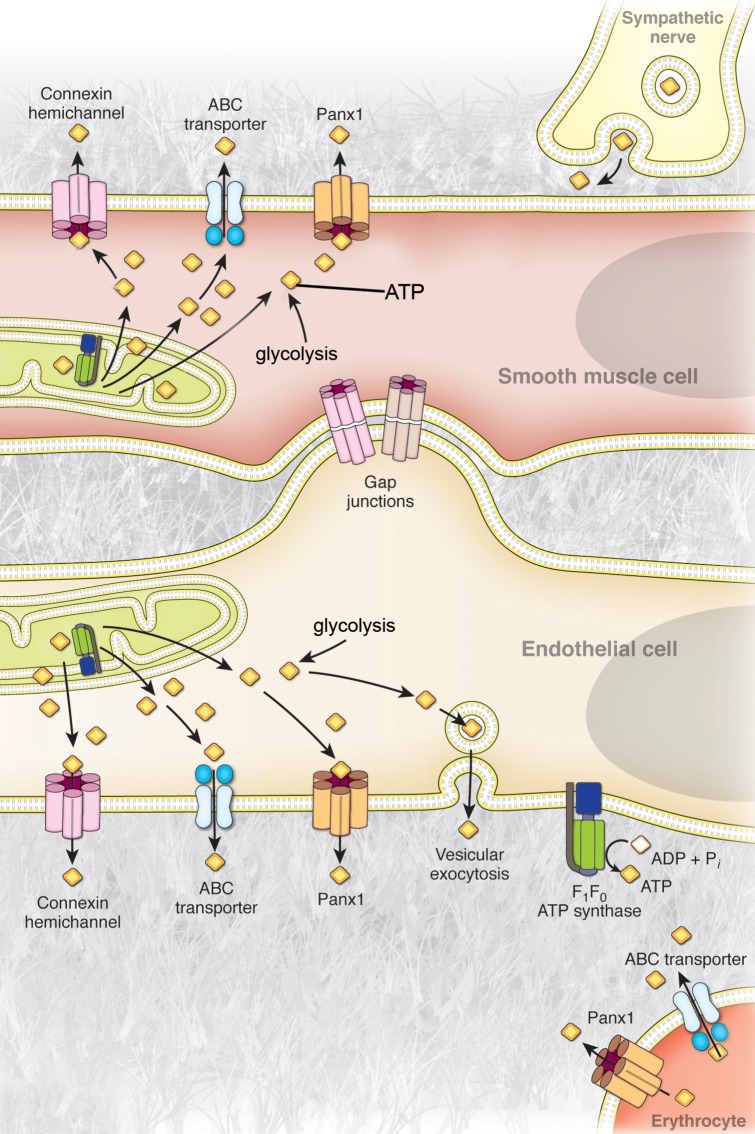Figure 1.
Mechanisms of ATP release from cells of the blood vessel wall. Representative illustration of the currently proposed mechanisms of ATP release from endothelial cells, vascular smooth muscle cells, perivascular sympathetic nerves, and circulating erythrocytes in the vascular system. Cytosolic ATP available for release from these cells is generated by glycolysis in the cytosol and oxidative phospohorylation in the mitochondria. In sympathetic nerves, ATP release has been shown to occur via vesicular exocytosis. Vascular smooth muscle cells have been suggested to release ATP through membrane transporters and channels, including connexin hemichannels and pannexin channels, as well as potentially by ABC transporters. Vascular endothelial cells have been proposed to release ATP via vesicular exocytosis, ABC-transporters, connexin hemichannels, pannexin channels, and by direct synthesis at the extracellular plasma membrane by a cell surface F1/F0-ATP synthase. Circulating erythrocytes have been suggested to release ATP through ABC transporters and via pannexin channels.

